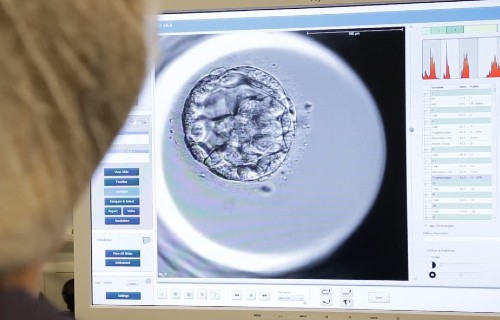
In humans, the worldwide ratio of males to females at birth is skewed in favour of the male sex. This is a global trend, which has continued for decades and has been confirmed by the World Health Organisation. Overall, the ratio is 105 male births to 100 female births. However, over the years, the balance naturally evens out as men have shorter life expectancy.
Even so, it is still unclear whether the different sex ratio at birth originates at fertilisation or later, during the pre- or post-implantation period. This deviation could be influenced both by the different fertilisation capacity of X vs Y spermatozoa and by the different developmental capacity of male and female embryos.
Given that preimplantation genetic testing for aneuploidy (PGT-A) provides information on the chromosomal constitution of embryos, including sex chromosomes, a group of researchers at Dexeus Mujer, led by biologist Beatriz Carrasco, carried out a retrospective study to determine the sex ratio in the blastocyst stage of human embryos generated by ICSI, in transferred and implanted euploid blastocysts, and, finally, in babies at birth.
In total, the study included embryos from 646 patients who underwent 921 cycles of preimplantation genetic testing for aneuploidy (PGT-A) from September 2017 to February 2020. A total of 2637 biopsied blastocysts were analysed.
The sex ratio of blastocysts was skewed in favour of the male sex, with 53.1% of blastocysts being diagnosed as male and 46.9%, as female. The sex ratio of blastocysts was skewed in favour of the male sex, with 53.1% of blastocysts being diagnosed as male and 46.9%, as female. Higher chromosomal euploidy was observed among female blastocysts compared to male blastocysts after adjusting the data according to female age, male age, and gonadotropin dose. No significant sex differences were observed in terms of implantation rates, miscarriage rates and live birth rates.
The authors concluded that more male embryos develop to the blastocyst stage than female embryos, but male blastocysts have a higher rate of aneuploidy, Therefore, the ability to implant and lead to a live birth is similar between sexes.
Reference article:
Male and female blastocyst: any difference other than the sex?
Beatriz Carrasco, María Carme Pons, Mónica Parriego, Sandra García, Nikolaos P. Polyzos, Anna Veiga.
Published: May 14, 2022DOI:https://doi.org/10.1016/j.rbmo.2022.05.004